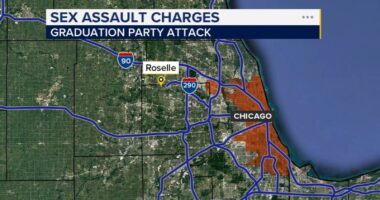Share this @internewscast.com

If planned tariffs go into effect, your favorite pasta brands may either vanish from grocery store shelves or experience significant price increases.
WASHINGTON — Spaghetti night might soon be postponed indefinitely.
The White House is contemplating a hefty 107% tariff on imported pasta, a move that could make popular pasta brands considerably more expensive or even lead to their removal from stores as soon as January.
These tariffs, set to be the highest single-product taxes imposed by the administration this year if approved, comprise two distinct charges: a 15% tariff on all European Union imports and an additional 92% tariff specifically targeting Italian pasta amid allegations that Italian manufacturers have underpriced American producers.
Several news outlets, including the Wall Street Journal, have indicated that President Donald Trump is weighing the implementation of these new tariffs in the near future.
The initial 15% tariffs are part of a broader strategy involving taxes on numerous international allies and trade partners, a hallmark of Trump’s second term in office.
Where are the tariffs coming from?
The original 15% tariffs are part of a broad strategy of taxes placed on numerous allies and business partners overseas, which has become a trademark of Trump’s second term.
The massive 92% tariffs are a bit more complicated.
In August 2024, the U.S. Department of Commerce launched an investigation into Italian pasta manufacturers after complaints from two U.S. companies, 8th Avenue Food & Provisions and Winland Foods. The companies alleged that a number of Italian pasta producers were “dumping” their pasta into U.S. markets, essentially exporting large amounts to the U.S. in order to lower prices and drive out competition.
A preliminary report from the Commerce Department released in September found that 13 Italian pasta producers were engaging in dumping, and proposed a 91.74% tariff on them.
The taxes were proposed based on a review of two of the companies, La Molisana and Pasta Garofalo, which the Commerce Department said were representative of the group. U.S. officials said in the preliminary report that both companies failed to provide requested documents, prompting a blanket tariff on all 13 companies.
The New York Post reports that both La Molisana and Pasta Garofalo deny the allegations that they were uncooperative, saying the process was mishandled by the Trump administration.
If those tariffs go into effect as scheduled in January, they will likely cause pasta prices to skyrocket almost immediately.
What pasta brands would be affected?
The 13 affected Italian brands the Commerce Department is targeting include a number of popular grocery store staples. Here is a full list:
- La Molisana
- Pasta Garofalo
- Rummo
- Agritalia
- Aldino
- Antiche Tradizioni Di Gragnano
- Italian-made Barilla (not including Barilla pasta made in the U.S.)
- Gruppo Milo
- Pastificio Artigiano Cav. Giuseppe Cocco
- Pastificio Chiavenna
- Pastificio Liguori
- Pastificio Sgambaro
- Pastificio Tamma
Rummo USA’s chief commercial officer, Jim Donnelly, told the New York Post that prices would likely increase, but wouldn’t be passed entirely on to customers. He warned that prices would likely jump from $3.99 to $7.99 per package if the tariffs go through.

















